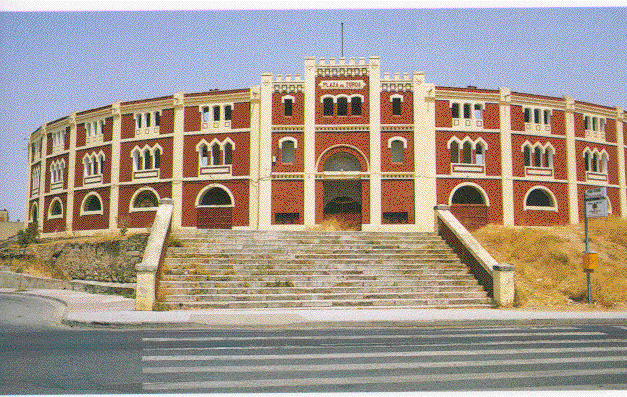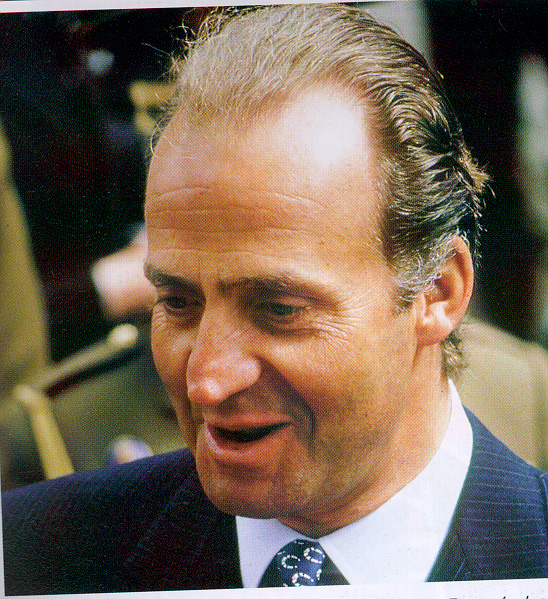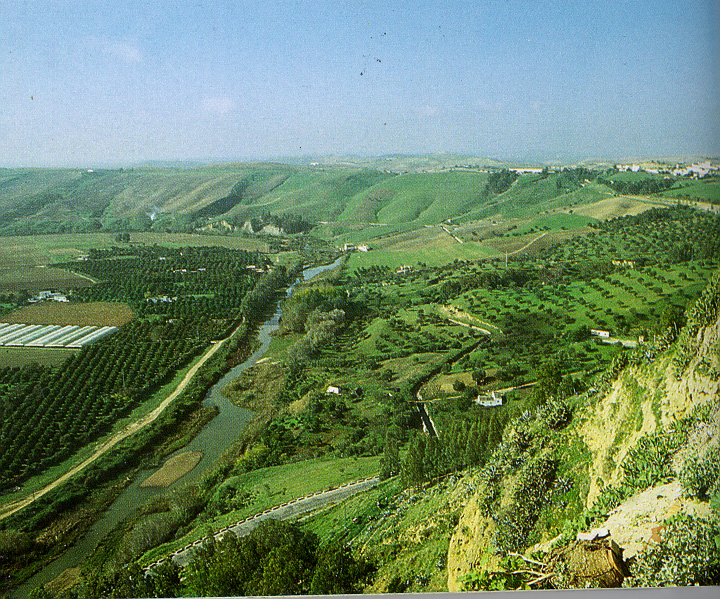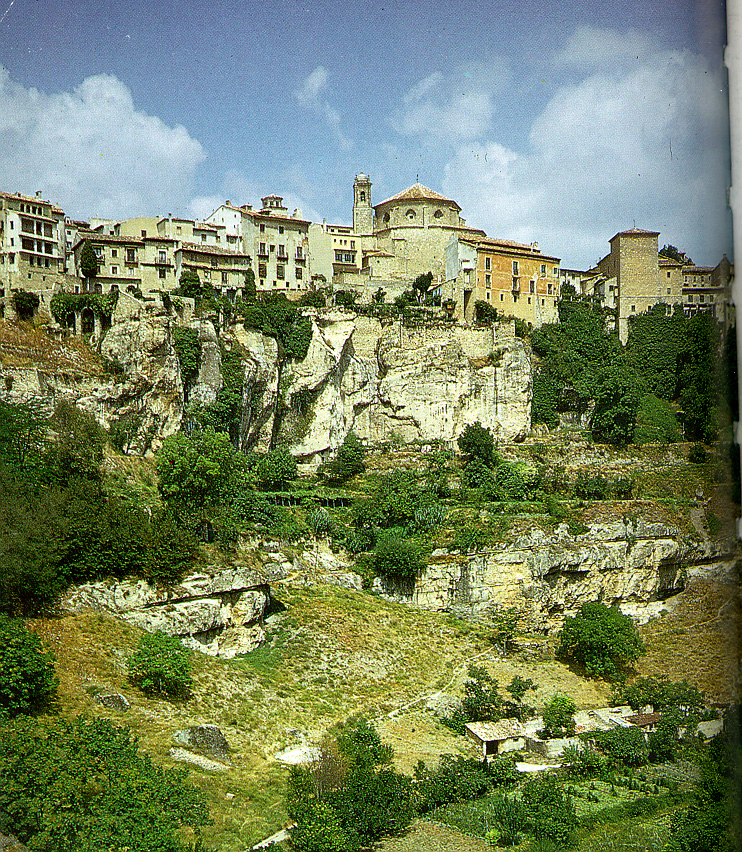Spain is a very old country with a rich historical background.
One of the characteristic features of the early history of Spain is the
successive waves of different peoples who spread all over Europe.
The first to appear were the Iberians. The next to arrive, attracted
to mining wealth, were the Pheonicians, who founded a number of trading
posts along the coast. Under the orders of Hamilcar Barca, the Carthaginians
took possession of most of Spain. It was at this time that Rome raised
a border dispute in defense of the areas of Greek influence, and thus began
in the Peninsula, the Second Punic War, which decided the fate of the world
at that time. After the Roman victory, Publius Cornelius Scipio,
Africanus, began the conquest of Spain. Spain remained under Roman
rule for six centuries. The Roman influence is reflected heavily
in Spain's architecture (pictured below is the Roman bullring).

Rome left Spain with four powerful social elements: the Latin language, Roman law, the municipality and the Christian religion. After the fall of the Roman Empire, the Suevi, Vandals and Alans entered Spain, but were defeated by the Visigoths who, by the end of the 6th century occupied virtually the whole Peninsula. At the beginning of the 8th century the Arabs entered from the South. They conquered the country swiftly except for a small bulwark in the North which would become the initial springboard for the Reconquest. The period of Muslim sway is divided into three periods: the Emirate (711-756), the Caliphate (756-1031) and the Reinos de Taifas (small independent kingdoms) (1031-1492).
In 1469, the marriage of the Catholic Monarchs, Isabella of Castile and Ferdinand of Aragon, prepared the way for the union of the two kingdoms and marked the opening of a period of growing success for Spain. In 1492, Christopher Columbus discovered America and in 1495, the Canary Islands became part of Spanish territory. The next two centuries, the 16th and 17th, witnessed the construction and peak of the Spanish Empire as a result of which the country, under the aegis of the Austrias, became the worldís foremost power, and European politics hinged upon it.
The main religion in Spain is Catholicism, this is very apparent by all of the massive cathedrals built all over Spain. Pictured below is Seville's massive Gothic cathedral, with its rich interior it is considered to be one of the most impressive cathedrals in Spain. This cathedral was built by Seville's Christian conquerors in the 15th century. This is the world's largest Gothic structure.

The War of Succession to the Spanish Crown (1701-1704) marked the end of the dynasty of the Habsburgs and the coming of the Bourbons. The Treaty of Utrecht in 1713 formalized the British occupation of the Rock of Gibraltar, giving rise to an anachronistic colonial situation which still persists today and constitutes the only dispute between Spain and the United Kingdom. In 1808 Joseph Bonaparte was installed on the Spanish throne, following the Napoleonic invasion, although the fierce resistance of the Spanish people culminated in the restoration of the Bourbons in the person of Fernando VII. In 1875, the monarchy was restored by Alfonso XII, he was proclaimed the King of Spain. In 1886, he was succeeded by his son Alfonso XIII. The Monarchy remained in control until 1936.&
On October 1, 1936, General Franco took over as Head of Sate and Commander-in-Chief of the Armed Forces. The Spanish Sate embarked on a period of forty yearsí dictatorship, during which the political life of the country was characterized by the illegality of all the political parties with the exception of the National Movement. Franco died in 1975, bringing an end to a period of Spanish history and the opening the way to the restoration of the monarchy with the rise to the Throne of the present King of Spain, Juan Carlos I de Borbon y Borbon (pictured below).

The young monarch soon established himself as a resolute motor for change to a western-style democracy by means of a cautious process of political reform which took as its starting point the Francoist legal structure. Adolfo Suarez, the prime minister of the second Monarchy Government (July 1976) carried out with determination and skill, the so-called transition to democracy. The Cortes (the courts) formed as a result decided to start a constituent process which concluded with the adoption of a new Constitution, ratified by universal suffrage, on December 6, 1978. On August 27, 1982, the prime minister presented to the King a decree for the dissolution of Parliament and the calling of a general election to be held on October 28th. Victory of the polls went to the Spanish Socialist Worker Party (PSOE) and its secretary general.. The subsequent general elections of 1986, 1989, and 1993 were also won by the Spanish Socialist Party and consolidated the position of the Popular Party, led by Jose Maria Aznar, as the second largest political force in the country.
Since 1964, radical changes have taken place in Spain. Industry has done most to change Spain; every year more Spaniards move to the cities to work in the factories. Every year more technical schools turn more peasants into mechanics, more investment creates new industries, and the rising standard of living creates growing economic power for Europe. Even though Spain is considered to be an industrialized country they still rely heavily on agricultural production. Shown below is a typical picture of what the land looks like that is used for farming.

HOUSING
Spain's landscape ranges from the rugged Pyrenees mountains to high valleys and ultimately to the coastline. Most people live in villages and hamlets with picturesque stone, houses and slate roofs. Most towns are small, but are filled with lots of comotion.
Housing construction has an important part in the economic cycles. The housing problem in Spain is that of affordability. The excessive relationship between market prices and average level of family income forces many people to live in substandard conditions. Young people in particular of having the most trouble obtaining housing. And the construction of new houses is not the solution because it will start an inflation process. The best thing to do is to offer the option between buying and renting. This would not generate inflation. In Spain, the Spanish Constitution grants everyone the right to a house. Approximately 300,000 new homes are being built every year. The housing cycle influences the economy greatly. And there are very few houses available for rent in Spain, this resembles the same problem in many other countries. Pictured below is an illustration of a wealthy neighborhood on the Mediterranean Sea.

In order to help solve the current problem of housing affordability in Spain, the Spanish government is arranging for financial institutions to offer reduced interest rates on mortgages. The government will also arrange to subsidize part of the interest. Before one can qualify for these benefits they must meet certain requirements. Here are some of the requirements: the loan cannot exceed the price of the house and the beneficiary cannot have an income of more than 5 times the SMI ( the minimum interprofessional salary). The government promotes these programs during times of crises. However, there are restrictions to this policy. For example, ground shortage, higher prices, and second houses. Nevertheless this policy has a clear redistributive component.

In Spain the rental market is very small compared to other countries and it has also been decreasing. This is because tenants usually have low incomes and also because the LAU (Rental Housing Law) of 1964 allowed landlords to drastically increase rents. In 1992, the law was modified to help protect the tenant. By law the tenant can stay a minimum of four years in a rental unit.
Housing prices are expensive because their is a shortage of new land, it takes quite awhile to get the proper authorization to build new units, and there are a lot of taxes imposed on them. There are however, some tax benefits for owning rather than renting a house. In Spain a homeowner can write off the interest and the land-value tax of a home. As seen below, a picture of a typical housing tract in Madrid.

In conclusion, Spain's housing problem is that there is a lack of affordable housing. The government tries to solve this problem by offering lower interest rates on mortgages, building more affordable housing units, and by implementing such policies as the Rental Housing Law and housing programs for the low income population.
REAL ESTATE
To illustrate how expensive housing is in Spain, a few examples are provided below. Real estate examples came from the Web.
Located in Asturias, near the Picos de Europa Mountains, in a heavily wooded area, a moderate house is for sale. The house sits on 1,250 acres of hillside overlooking a river. Of course this is a large piece of property, but the asking price is $6.2 million (750,000 pesetas). This isn't for the average middle-class family.
In Galicia, located in the northwestern part of Spain, a summer cottage is for sale. The house is wood, two levels, four bedrooms, two bathrooms, diesal oil heating, and is on a lake. It was something we would see in our local mountains. Asking price is $123,000.
A farmhouse that needed to be restored is for sale at $205,000. Located in the city of Castellon de la Plana, it has five bedrooms, two bathrooms, a two car garage, and is a total of 360 sq. meters.
The last example clearly shows how expensive city living is. Located in one of the most elite neighborhoods in Barcelona, a 225 sq. meter apartment is for sale. It has five bedrooms, three bathrooms, a two car garage, a terrace, a community pool, and an alarm. Asking price, $ 490,000.
Spain's real estate market is probably similar to that of the United States and other European countries. It is hard to get a sense of what the average price of a house is because you don't know what area you are looking at. In general, housing is expensive and there are a lot of people and families that cannot afford it.
This page was created by Sara Samhat as part of the requirements for FCS428 International Housing in the Spring of 1998 at California State University, Long Beach.
![]() ©1998
- This page was developed in electronic form and made available on-line
by: Dr.
Lydia Sondhi, Family and Consumer Sciences, California State University,
Long Beach
©1998
- This page was developed in electronic form and made available on-line
by: Dr.
Lydia Sondhi, Family and Consumer Sciences, California State University,
Long Beach
last updated: 06/03/98
 SPAIN
SPAIN